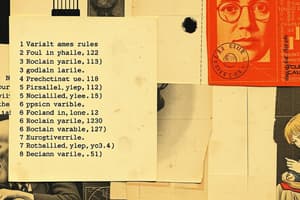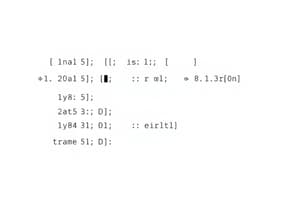Podcast
Questions and Answers
Programming languages translate human-readable code directly into machine language without any intermediate steps.
Programming languages translate human-readable code directly into machine language without any intermediate steps.
False (B)
Which of these is NOT a basic programming element discussed in the text?
Which of these is NOT a basic programming element discussed in the text?
- Classes (correct)
- Variables
- Data Types
- Control Structures
The ______ operator is used to calculate the remainder after division.
The ______ operator is used to calculate the remainder after division.
modulo
What is the main purpose of a loop in programming?
What is the main purpose of a loop in programming?
Match the following programming concepts with their corresponding descriptions:
Match the following programming concepts with their corresponding descriptions:
Flashcards
Programming
Programming
The process of instructing a computer using code.
Variables
Variables
Named storage locations used to hold data.
Data Types
Data Types
Define the kind of data a variable can hold (e.g., int, string).
Operators
Operators
Signup and view all the flashcards
Control Structures
Control Structures
Signup and view all the flashcards
Functions
Functions
Signup and view all the flashcards
Algorithms
Algorithms
Signup and view all the flashcards
Debugging
Debugging
Signup and view all the flashcards
Study Notes
Introduction to Programming Concepts
- Computer programming involves instructing a computer to perform specific tasks using a set of written instructions.
- Programming languages are used to translate human-readable code into machine-understandable instructions.
- Programming involves problem-solving, logical thinking, and algorithmic design.
- Basic programming elements include variables, data types, operators, control structures, and functions.
Variables and Data Types
- Variables are named storage locations used to hold data.
- Data types define the kind of data a variable can store (e.g., integer, float, string, boolean).
- Variables must be declared with a specific data type before use.
- Variables allow the program to change values during execution.
Operators
- Operators are symbols or keywords that perform specific operations on data (e.g., arithmetic, logical, relational).
- Arithmetic operators perform calculations (+, -, *, /, %, **).
- Relational operators compare values (<, >, <=, >=, ==, !=).
- Logical operators combine or modify conditions (and, or, not).
Control Structures
- Control structures dictate the order in which statements are executed in a program.
- Conditional statements (if-else) execute code blocks based on conditions.
- Looping statements (for, while) repeat code blocks until a condition is met.
- Control structures enable program flow and decision-making.
Functions
- Functions are reusable blocks of code designed to perform a specific task.
- Functions reduce code redundancy and improve code organization.
- Functions often take arguments (input values) and return a result.
- Function calls execute the code within the function.
Algorithms
- Algorithms are step-by-step procedures for solving a particular problem.
- Algorithms form the blueprint for a program's logic.
- Algorithms are crucial for writing efficient and effective programs.
Input and Output
- Input functions allow a program to receive data from the user or other sources.
- Output functions display results to the user or save them to files.
- Common input/output methods may vary based on the programming language.
Debugging
- Debugging is the process of identifying and fixing errors (bugs) in a program.
- Debugging involves understanding the program's logic and tracing execution flow.
- Common debugging techniques include print statements, breakpoints, and stepping through code.
Programming Paradigms
- Programming paradigms are fundamental styles of programming.
- Procedural programming follows a sequence of procedures or functions.
- Object-oriented programming uses objects that contain data and methods.
- Other paradigms include functional and event-driven.
Problem-Solving
- In programming, problem-solving often involves breaking down a large problem into smaller, manageable subproblems.
- Decomposing problems aids in clear programming design.
- Effective programming often involves identifying inputs, outputs, and the steps to transform inputs into outputs.
Studying That Suits You
Use AI to generate personalized quizzes and flashcards to suit your learning preferences.





